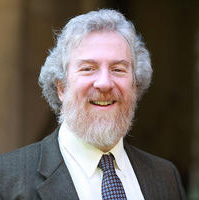Mah Nishtanah . . . A Seder for Yom Ha’atzma’ut

In recent weeks, Medinat Israel (the State of Israel) was celebrated by citizens, residents, and the worldwide Jewish community with an array of observances for Yom Ha’atzma’ut (Israel Independence Day). In synagogues of the Conservative/Masorti Movement, morning minyan included the Hallel prayer and a special Torah reading, affirming the understanding that the establishment of Israel is not merely an item in the political history of the mid-20th century, but a vital step in the spiritual story of our people and, perhaps, the world. The “Prayer for the State of Israel,” included in the Shabbat morning service in almost all synagogues, speaks of Israel as “reishit tzemichat ge’ulateinu” (the beginning of the flowering of our redemption).“Redemption,” here, must be understood as the Messianic Era of universal peace and understanding.
Beyond these insertions into the traditional liturgy, many communities, schools, and congregations experience challenges in finding the “right” way to celebrate. There is no universal ritual beyond the Israeli tradition of a family barbecue at a beach, lake, or forest, where possible. In the United States and around the world, there are often gatherings to hear speakers, eat Israeli food, and share Israeli music and dance. Some major Jewish population centers hold impressive celebrations, offering music, food, kids’ programs, and debate and discussion. New York City, for example, holds such gatherings on the Upper West Side and in Park Slope, Brooklyn. But very often in our Yom Ha’atzma’ut programming, we struggle to find ways to touch and engage the soul.
Discussions about Israel can easily become divisive and vitriolic (or worse), as there are many views and opinions about what will be best for Israel, what the Israeli government should do, and how the Jewish community should and should not speak and behave. A true sign of promise is the steady increase of quality programs that create safe spaces for discussion and exploration, such as Encounter, cofounded by JTS graduate Rabbi Melissa Weintraub (RS ’06).
As a liturgist, I believe that it is through rituals and “religious” ceremonies that we move beyond intellectual and political debate, and engage the heart and soul as partners with the mind and intellect. My parents made aliyah (moved to Israel) in 1946 and my father fought in the War of Independence, so the visions and dreams out of which Israel was born were a natural part of my early years. The stories and dreams, the songs and images, must be told and retold so that we understand the very real challenges of Israel today in the light of spiritual, personal, and “objective” history.
In many homes, discussions of contemporary freedom and slavery, sex trafficking, and oppressive work environments are a part of our Pesah seder. I suggest it is time to adapt this powerful and ancient ritual model to Israel and to create Israel “seders,” where we ask questions and tell stories. We can hear the dreams of the Chovevei Tziyon (lovers of Zion) of the late 19th century, sing the songs of those who were in the earliest part of the Yishuv (Jewish settlement in Palestine), and recall the critical moments in which Israel was born and the ways in which she has grown. Such seders have been attempted now and again, and several versions of a “Haggadah” have been created over the years. Media and technology now make possible a more direct connection with some of these moments, and I have been delighted to work in the past year with JTS students and with colleagues to create a new Israel seder. These seders have been held at JTS and at synagogues from Florida to California, and even at Kibbutz Lotan in the Negev. More information can be found at the website of the Israel Seder Project, a program that I direct.
Teens and adults alike have been moved by the archival footage of David Ben-Gurion declaring the establishment of the State; by the haunting singing of Shuly Natan with the original version of “Yerushalayim Shel Zahav,” which speaks of the absence of Jews from the Old City; and the footage of Israeli forces entering the Old City in the Six Day War. The compelling lyrics of Naomi Shemer’s “Chorshat Ha’ekaliptus” (“The Eucalyptus Grove”), about the house that an immigrant built for his wife in the early years, give a sense of that time, and the powerful rap “Jerusalem” by Matisyahu offers a starting point to the dream of Jerusalem going back to the Babylonian Exile.
The Israel seder—with four cups of wine (or perhaps, following a recent suggestion, four cups of wine, orange juice, milk, or water), four questions, songs of Hallel, and modern songs—offers a way to plant understanding of Israel in our souls and hearts.
I look forward to seeing this initiative grow and, as always, welcome your questions and reflections. You may reach me at sabarth@jtsa.edu.



